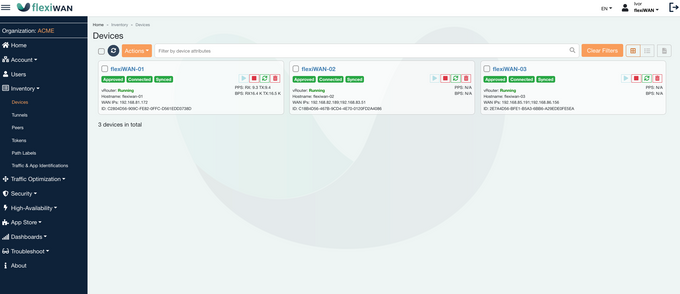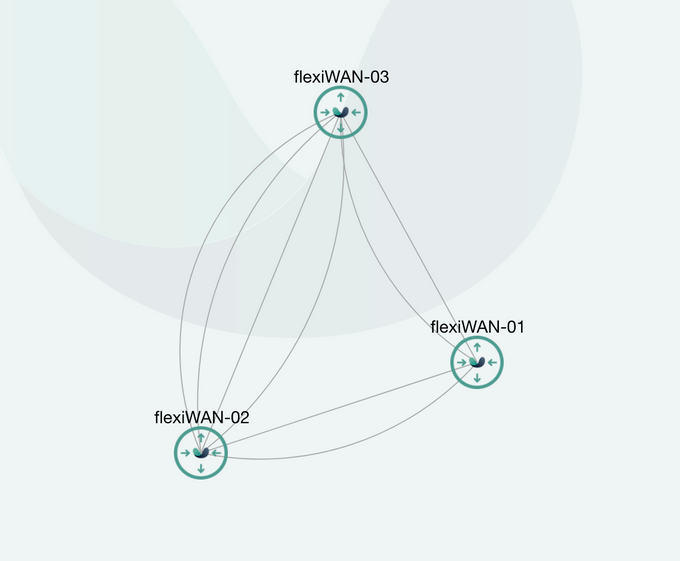Demystifying SD-WAN Deployment—Why It’s Not as Complex as You Think
The networking realm is rapidly changing, and businesses are increasingly turning to SD-WAN to streamline their operations and enhance connectivity. With flexiWAN, it doesn't have to be a complicated process.
Updated May 10, 2024.

Coined back in 2014, SD-WAN (Software-Defined Wide Area Networking) technology is rapidly emerging as a game-changer in the world of networking, challenging traditional network architectures with its innovative approach. This technology not only promises to simplify network management and operations but also significantly enhance efficiency and flexibility. By decoupling network hardware from its control mechanism, SD-WAN allows businesses to manage their networks through software, offering a level of agility previously unattainable with conventional WAN technologies.
As an approach, SD-WAN caters to the increasing demands of modern businesses for reliable, secure, and flexible network infrastructures, especially in an era dominated by cloud computing and SaaS applications.
Comparing SD-WAN to Traditional Networking
Transitioning from traditional WAN to SD-WAN marks a paradigm shift in how networks are designed, implemented, and managed.
Traditional networks are often reliant on fixed circuit paths and hardware-centric configurations, presenting challenges in scalability, complexity, and cost. These networks, typically MPLS-based, are optimized for stable, yet static routing of data, which can lead to inefficiencies as business applications move to the cloud.
The rigidity of traditional WANs in handling today's dynamic internet-based applications and services often results in increased latency, lower flexibility, and higher operational expenses.
SD-WAN introduces a transformative approach by leveraging software-defined networking principles to manage WAN connections. This technology offers dynamic path selection, allowing for real-time traffic routing based on application needs, bandwidth availability, and network health.
Unlike its traditional counterparts, SD-WAN supports multiple connection types, including MPLS, broadband internet, and LTE, providing a resilient and flexible architecture. This adaptability not only improves application performance and user experience but also significantly reduces reliance on costly MPLS links, offering a more cost-effective solution for expanding network capabilities. By abstracting the control layer from the hardware, SD-WAN simplifies network management, enabling centralized control and visibility across the network, which contrasts sharply with the decentralized, hardware-focused approach of traditional networking.
» Learn more: IPsec vs. SD-WAN
3 Common Myths About SD-WAN Busted
1. SD-WAN Is Too Complicated
The belief that SD-WAN introduces complexity into IT infrastructure is probably the most common misconception about SD-WAN. Contrary to this belief, SD-WAN simplifies network management through its centralized control features, allowing IT teams to easily configure, monitor, and maintain the network from a single dashboard. This simplification reduces the operational burden and technical barriers traditionally associated with WAN management.
2. SD-WAN Is Expensive
Another widespread assumption is that SD-WAN incurs higher initial costs than traditional WAN solutions. While the upfront cost in SD-WAN might be perceived as higher, it's important to consider the total cost of ownership (TCO). SD-WAN technology reduces ongoing operational costs by optimizing bandwidth usage, reducing reliance on expensive MPLS links, and simplifying network operations, leading to significant savings over time.
3. SD-WAN Is Only Suitable for Large Enterprises
There's a misconception that SD-WAN is only suitable for large enterprises with complex networking needs. In reality, SD-WAN's scalability makes it an excellent choice for businesses of all sizes. Its ability to adapt to various bandwidth requirements and to connect multiple locations seamlessly makes it equally beneficial for small and medium-sized enterprises seeking to improve their network performance and security.
How flexiWAN Makes SD-WAN Deployment Easy
flexiWAN demystifies SD-WAN deployment by emphasizing simplicity and intuitiveness. Thanks to its user-friendly dashboard, connecting sites with flexiWAN is nothing more than a 4-step process:
Step 1.
Head out to the Devices page and select the devices you would want to connect
Step 2.
Start creating tunnels by clicking the "Create Tunnels" button
Step 3.
Choose the topology you want to go for. You can choose between "Full Mesh" and "Hub and Spoke"
Step 4.
And that's it—all that's left for you is to review the connected devices
Simplifying SD-WAN Deployment Can Be Easy
Facilitating a smoother SD-WAN deployment process involves strategic steps to mitigate challenges. You should begin with a thorough needs assessment to understand your network requirements and objectives, which means selecting a vendor that offers a flexible and easy-to-use platform. Assess the vendor's ability to provide comprehensive deployment support and a robust security framework. Moreover, you should look into training your IT team on SD-WAN technology, ensuring they're prepared to manage the new system effectively.
Thankfully, it doesn't have to be a complicated process. Let flexiWAN simplify your SD-WAN deployment instead.










